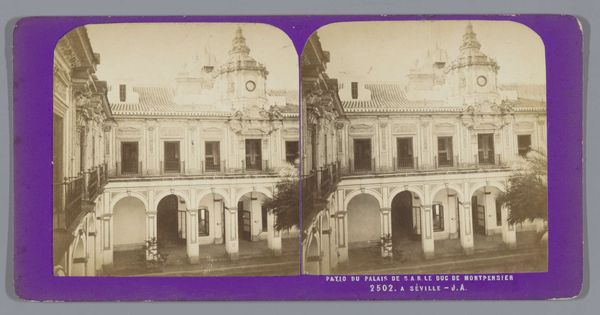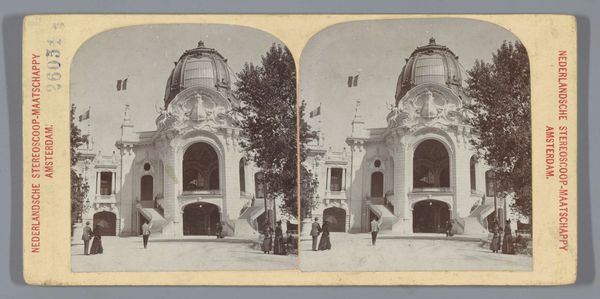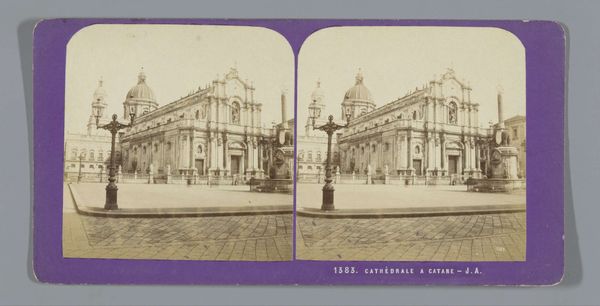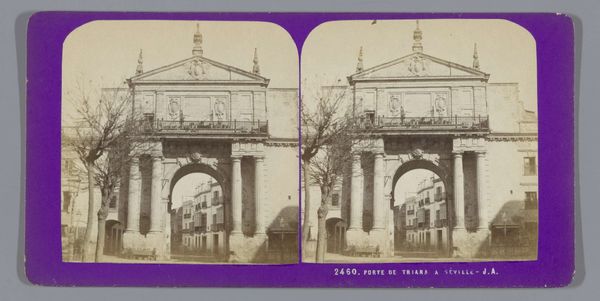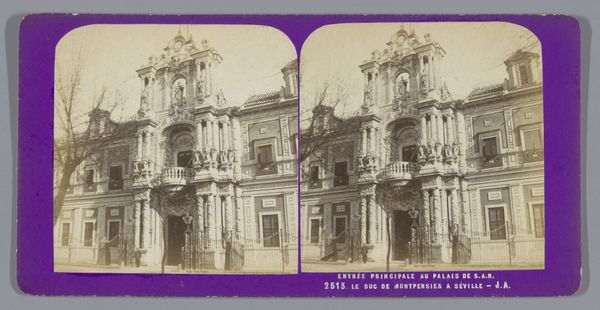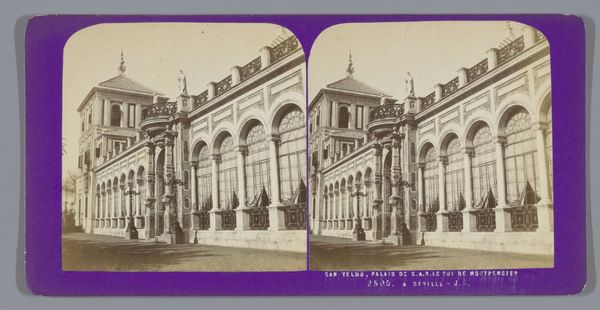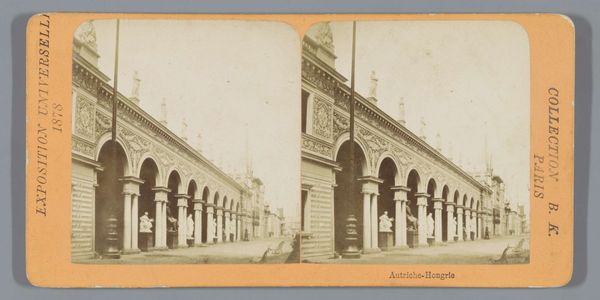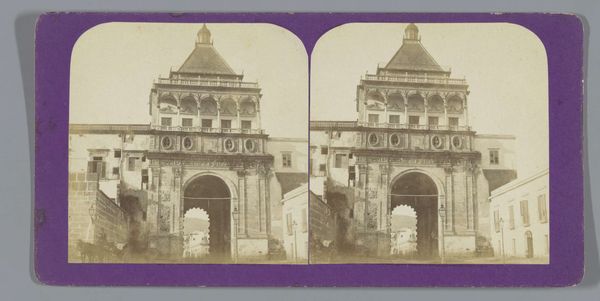
photography, gelatin-silver-print, architecture
#
photography
#
gelatin-silver-print
#
architecture
#
building
Dimensions: height 85 mm, width 170 mm
Copyright: Rijks Museum: Open Domain
Curator: Immediately, the symmetrical arrangement of this building is striking. Editor: Indeed. This is a gelatin silver print by Jean Andrieu, dating from between 1862 and 1876. It depicts the facade of the Real Basílica de Nuestra Señora de Atocha in Madrid. There is a distinct separation of exterior from interior, revealed by its very closed-off nature, creating, perhaps, an elitist divide. Curator: Note the clarity of form captured through photography; it accentuates the architectural details. The rhythmic repetition of arches leads the eye across the surface, but also traps the gaze inside its boundaries, which offers a study of perspective. The interplay between light and shadow emphasizes volume, transforming something purely functional into a composition that evokes grandeur, or more specifically, classicist aspirations of power and spiritual command. Editor: Quite so, though, what is lost in this image is an appreciation of what its materials denote; who built it, what did it take to raise each brick, carve each piece? How did each member, each citizen, benefit in concrete ways? Such closed quarters signal limited communal access, a deliberate architectural message regarding how community ought to behave within a space. Curator: Even still, the architect’s hand—the hand responsible for manipulating all that material, of course—shows his intention in spatial harmony, especially in his emphasis on verticality, pointing to something transcendental through its structure. Its components—the porticoes, balustrades, pediments—form a complex visual hierarchy. Editor: It all presents us with lingering questions on the production of space, wouldn't you say? What happens when something appears immutable but then, suddenly, decades after this image was created, falls to destruction, or erasure? How easily the built form belies human effort, our limitedness in time. Curator: A stark reminder that everything changes; or, as Lévi-Strauss would have it, is transformed in new combinations of similar constituent structures! Thanks for expanding our views. Editor: Likewise. It is important to remember to read beneath surface impressions.
Comments
No comments
Be the first to comment and join the conversation on the ultimate creative platform.
